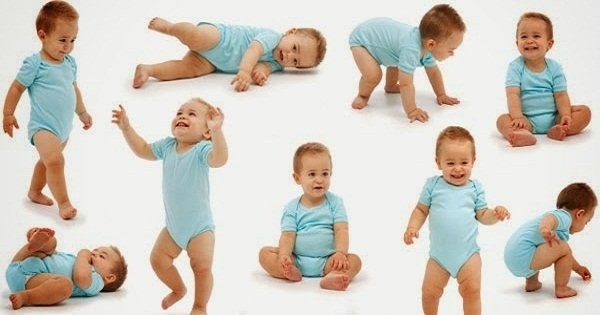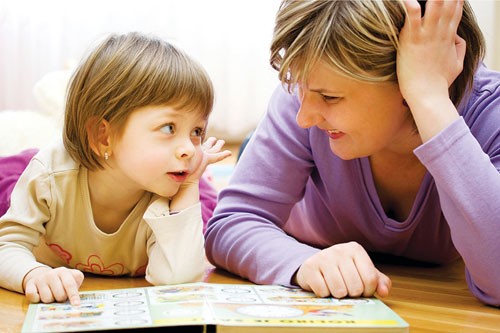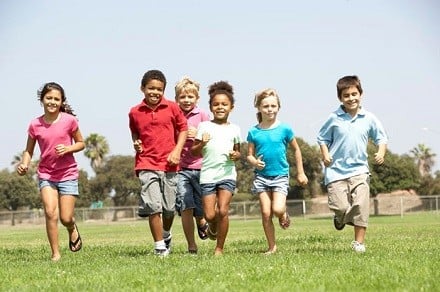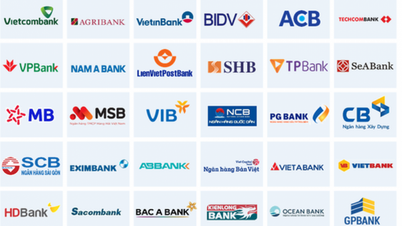Recognizing each developmental milestone of a child from birth to adulthood will help parents gain more knowledge to accompany their children on their journey of life.
The National Institutes of Health (NIH) defines developmental milestones as the physical, cognitive, language, social, and emotional skills that children achieve as they grow and develop. Experts have discovered the stages of development, from infancy to adulthood, and observed the developmental milestones that children achieve during each stage.
 |
| The period from birth to 18 months is a time of rapid growth and change for a child. |
These developmental milestones are used to determine whether a child is developing normally or is behind the general age group. Parents also need to understand each stage of their child's development to create the best environment for their child.
However, each individual develops at his or her own pace. Therefore, you should not be too worried if your child does not reach important milestones. In this case, you can take your child to the doctor for early intervention, if necessary.
According to the US National Institutes of Health (NIH) and the US Centers for Disease Control and Prevention (CDC), children go through the following developmental milestones:
18 month milestone
The period from birth to 18 months is a time of rapid growth and change for a child. From smiling and rolling over to cooing and babbling, they change every day.
At 18 months of physical age, the baby can walk without holding on to anyone, can doodle, tries to use a spoon to feed himself, climbs up and down from a chair without the help of an adult.
Cognitively, the child imitates doing household chores, such as sweeping the floor with a broom, and plays with toys in simple ways, such as pushing a cart; shows interest in a doll or stuffed animal by pretending to feed it; knows what simple objects are used for, such as a telephone, toothbrush, spoon; points with the hand to get the attention of others; points to a body part and shows curiosity.
In terms of language, your baby says three or more words besides “mama” or “dada” and follows simple commands without any other gestures, for example, he or she can sit when you say “sit down.”
Your baby can move around a lot but always stay close to you, showing you something interesting, looking at a few pages of a book; your baby knows how to put his or her arms and legs out when dressing; likes to give toys to others when he or she wants to play with them. In addition, your baby can express anger, fear of strangers, or show affection to familiar people.
3 year milestone
Physically, children's motor skills at this stage begin to develop, they can run, jump, climb, ride a tricycle, go up and down stairs step by step. They can string objects together, dress themselves, can twist and turn doorknobs, can turn the pages of a book.
 |
| At three years old, children can ask questions about who, what, where or why. |
Cognitively, children can draw circles when instructed; avoid touching hot objects when warned; use objects to play with toys such as dolls, animals and people; and play with 3- or 4-piece puzzles.
At this age, children can ask who, what, where or why, name the most familiar things, know their name, age and gender. They can name a few friends, and have the ability to talk so that strangers can understand 75% of the story.
Children can join in play with other children, show affection to friends around them without being prompted, show concern when they see you crying, and express a range of clear emotions.
5 years old milestone
By age 5, children can catch a ball, pour water, use buttons, hold a crayon between their index finger and thumb, hop on one leg, swing, and climb with ease.
 |
| 5 year old children can do some personal things like dressing themselves, feeding themselves... |
Cognitively, children can name some colors of objects, draw a human body with six parts. They can also tell stories, count to 10, understand words about time or write/read some letters, know about everyday things, such as money and food.
At this age, children can say sentences of four or more words, recount what happened during the day, and tell a simple story with two events.
In terms of social and emotional communication, children want to please their friends and be like their friends, so they can pretend to do something while playing to create comfort, like to be a helper, tend to follow rules, can do simple housework, like to sing, dance and act; begin to perceive gender.
Stage from 6 to 12 years old
At this stage, children begin to lose their baby teeth, develop more complex movement skills such as jumping rope, riding a bike, along with writing, drawing and coloring. Children can run in zigzags, jump down stairs, ride a wheelchair and catch small balls.
 |
| At the age of 6, children start first grade and get used to a new learning environment. |
Your child is able to combine gross motor skills such as running to kick a ball, jumping rope. These physical skills depend on how often your child practices them. Complex motor skills also develop, your child can brush his teeth and do daily hygiene tasks without your help.
Puberty begins for girls between the ages of 8 and 13 and for boys between the ages of 10 and 16. Puberty is marked by the first menstrual period for girls and “wet dreams” for boys.
At this age, children enjoy playing games, understand numbers and fractions, know the days of the week, can read and write, understand related things and can present a problem coherently, progress to abstract thinking, children can look at pictures and tell a story according to their rich imagination; Develop reasoning skills.
In terms of language, children enjoy talking to others, read books and can write stories, use increasingly descriptive and detailed language, and are able to communicate ideas clearly along with their own views on things.
In social and emotional communication, children learn to cooperate and share, have humility and understand the value of friendship, communicate more widely, have stable emotions and know how to share emotions with friends, or show themselves as adults with younger children.
Stage from 13-18 years old
Physically, at this stage, children have the characteristics of puberty. Girls will develop breasts and body hair and begin menstruation. Body curves begin to appear, and height and weight also increase.
 |
| During puberty, parents should pay more attention to their children's psychology. |
Boys develop body hair, their voices deepen, their testicles and penis grow, and they develop acne. Muscle growth is a clear sign in boys during puberty. Their shoulders become broader and taller, while their faces become less round and more angular. Although not as tall as girls, boys also grow rapidly during this age.
At this age, children develop the ability to think abstractly, set goals for themselves, think long-term, and compare themselves with their friends.
In social and emotional communication: Emotional and sexual relationships make children curious and inquisitive. In addition, children develop independence from their parents and are greatly influenced by their friends.
During this period, due to lack of knowledge, children may have unsafe sex, use drugs and stimulants including alcohol and tobacco. Therefore, parents need to pay attention and have educational methods to help children avoid falling.
This is also the age when children can easily experience feelings of sadness and even depression. If your child's sadness seems extreme or worsens, you should take them to a mental health professional for early and appropriate intervention.
This is the most important and difficult stage for children and parents, children often tend to rebel against their parents, often called the "rebellious" stage. Children may act as if they do not need you. But let them know that you care by helping them with some simple things in their daily life, both at school and at home.
Encourage and involve your children in sports, art or music, organize outdoor activities to help them release energy, encourage them to accept new challenges. Let them know that their victories and efforts are also a source of great pride for you.
Take your child's concerns and opinions seriously, encourage them to share their opinions and problems with you or a trusted adult. Always be there for your child and provide the support they need, while being consistent in your discipline.
Source


![[Photo] "Lovely" moments on the 30/4 holiday](https://vphoto.vietnam.vn/thumb/1200x675/vietnam/resource/IMAGE/2025/5/1/26d5d698f36b498287397db9e2f9d16c)
![[Photo] Ha Giang: Many key projects under construction during the holiday season](https://vphoto.vietnam.vn/thumb/1200x675/vietnam/resource/IMAGE/2025/5/1/8b8d87a9bd9b4d279bf5c1f71c030dec)


![[Photo] Binh Thuan organizes many special festivals on the occasion of April 30 and May 1](https://vphoto.vietnam.vn/thumb/1200x675/vietnam/resource/IMAGE/2025/5/1/5180af1d979642468ef6a3a9755d8d51)
































































































Comment (0)